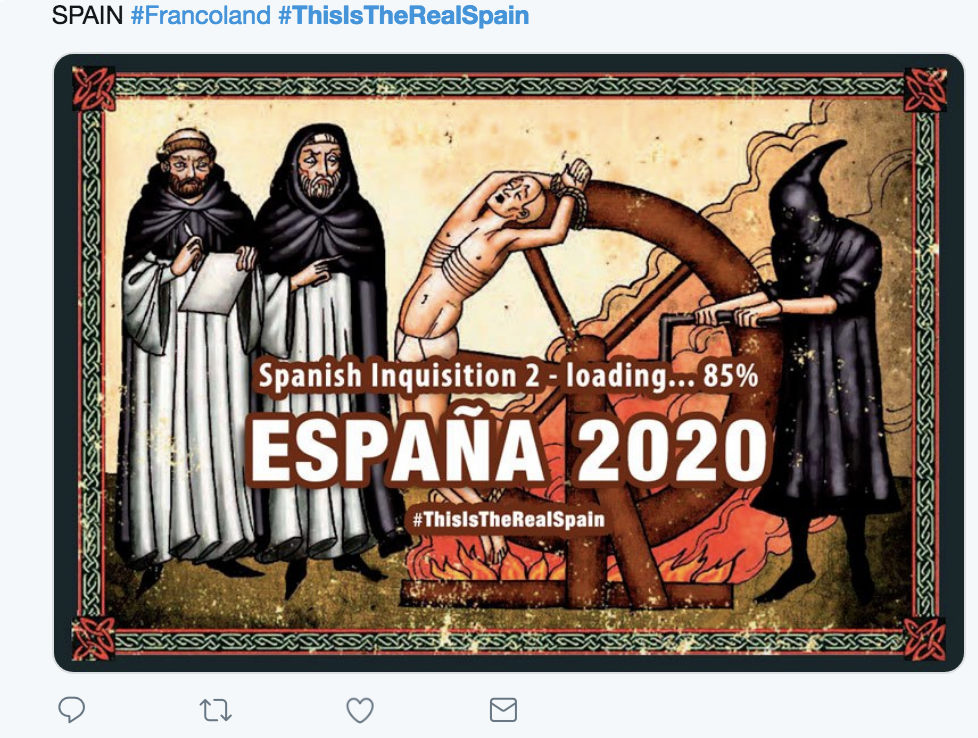A couple of weeks ago, Irene Lozano, head of the Spanish foreign ministry’s España Global department, launched a campaign called “This is the real Spain”. The idea was to try to ensure that outsiders got an idea of the country that was removed from the dark, Francoist vision that has long been presented by the Catalan independence movement. The timing, of course, was no coincidence. A few days later, the trial began of leaders of the failed bid for Catalan independence in October 2017. While the stakes are extremely high for the defendants, they are, arguably, just as high for the Spanish state, which wants to reassure the world that its judiciary – and therefore democracy – are fit for purpose.
Having made a video featuring celebrities, multinational bigwigs and others bigging up the country’s democratic credentials, Lozano starting broadcasting the virtues of modern Spain on social media. Unfortunately for her, those tweets were swiftly followed by a torrent of further tweets, under the same #ThisIsTheRealSpain hashtag, by those whose propaganda she was seeking to counter.

A quick glance at the content of the streams of competing #ThisIsTheRealSpain tweets shows two wildly contrasting ideas of a country. While the government’s version of Spain is a multi-coloured collage of fêted filmmakers, Michelin-star-laden chefs, globetrotting bankers and grinning athletes, for pro-independence Catalans it’s a black-and-white photo of a policeman bashing an elderly lady on the head with a truncheon.
The Catalan issue has colonised the Spanish political arena for a long time and, with the trial, it is doing so even more now. But, as I wade through my Brexit-prompted application for Spanish nationality, I’ve been asking myself recently what “The real Spain” means for me, away from the noise of day-to-day news.
Off the top of my head… orderly queues at supermarket fish counters; crass daytime TV; the Picos de Europa mountains; the matiness of manual workers; the self-righteousness of deskbound civil servants; Paco de Lucía’s Almoraima album; Rafa Nadal’s forehand and off-court modesty; the people and bars of Ciudad Real; the punctuality of the AVE high-speed trains; unnecessarily glazed croissants; noisy late-night children; the lottery of the 10-euro menu del día; a sensitivity to, bordering on obsession with, the opinions of other nations; the diversity of Spanish politics; the tribalism of Spanish politics; tarta de Santiago; irritating pop band names like La Oreja de Van Gogh or El sueño de Morfeo; doing things in big groups; the incomprehensible appeal of Roscón de Reyes; and, lastly, those massive, shapeless, woollen green overcoats that older men wear in the winter and which I find slightly disturbing.
(It’s a pretty haphazard list and if you’d asked me on any other day I would probably have given a very different answer.)
0 Comments